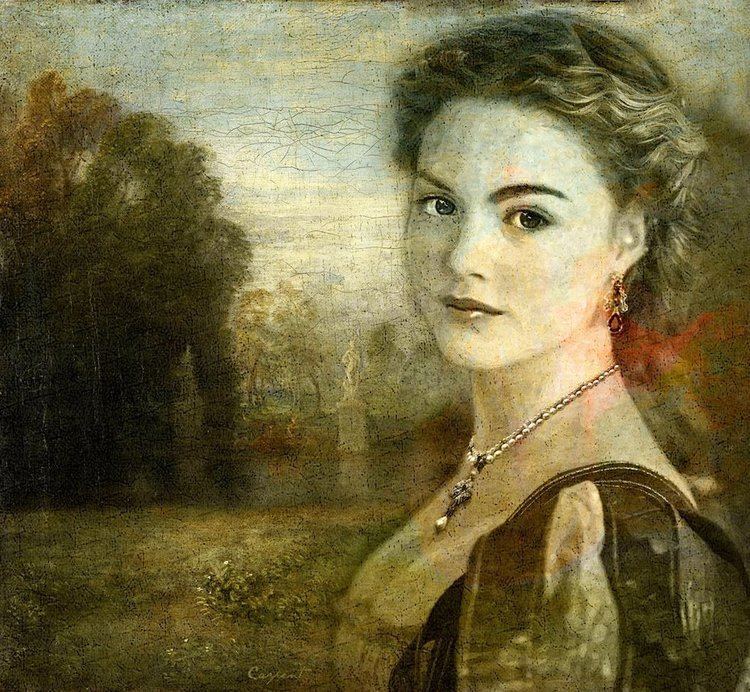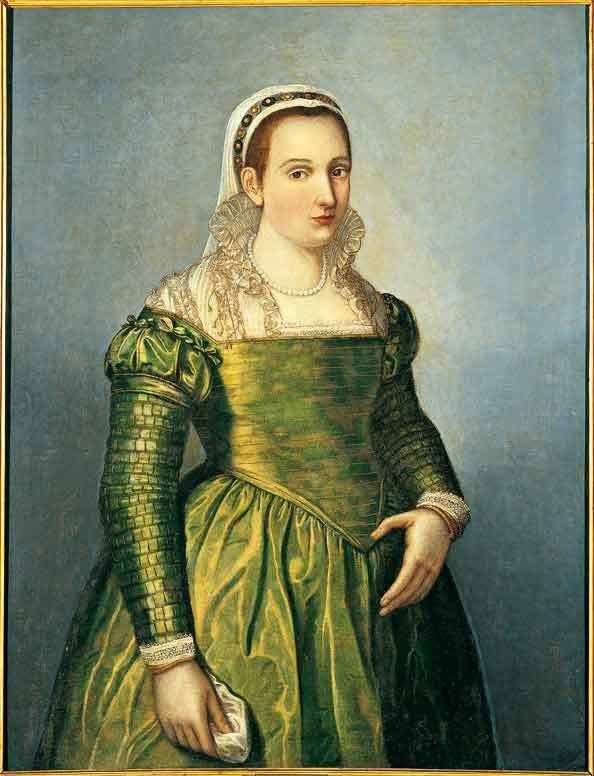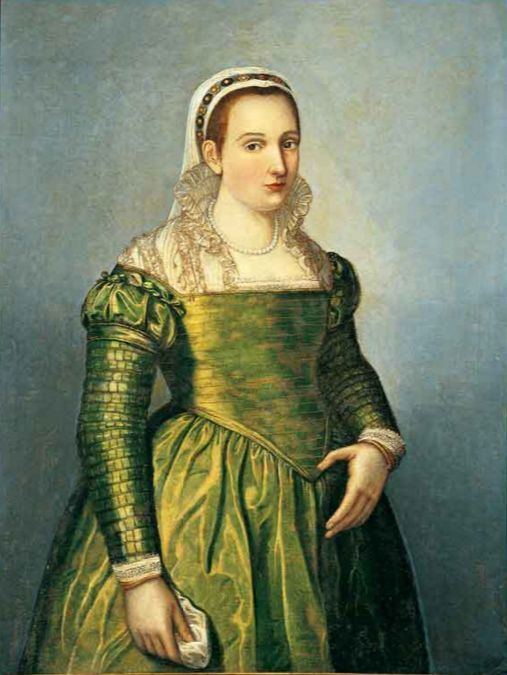Noble family Colonna Name Vittoria Colonna Occupation Poet | Mother Agnese da Montefeltro Role Poet | |
 | ||
Spouse Fernando d'Avalos (m. 1509) Books Sonnets for Michelangelo, Who Is Mary?: Three Early Modern Women on the Idea of the Virgin Mary Parents Agnese di Montefeltro, Fabrizio Colonna Grandparents Federico da Montefeltro, Battista Sforza Similar People Veronica Franco, Sofonisba Anguissola, Federico da Montefeltro, Battista Sforza, Isotta Nogarola | ||
Vittoria colonna michelangelo art song
2005 vittoria colonna e michelangelo 3 eng
Early life and marriage

Vittoria Colonna was born at Marino, a fief of the Colonna family in the Alban Hills near Rome. She was the daughter of Fabrizio Colonna, grand constable of the kingdom of Naples, and of Agnese da Montefeltro, daughter of the Duke of Urbino. Colonna was betrothed when she was four years old to Fernando Francesco d'Ávalos, son of the marquis of Pescara, at the insistence of Ferdinand, king of Naples. She received the highest education and gave early proof of a love of letters. Her hand was sought by many suitors, including the dukes of Savoy and Braganza, but at nineteen, by her own ardent desire, she was married to d'Ávalos on the island of Ischia on 27 December 1509. There she became part of the literary circle of Costanza d'Avalos, Duchess of Francavilla, her husband's aunt.
Contents
- Vittoria colonna michelangelo art song
- 2005 vittoria colonna e michelangelo 3 eng
- Early life and marriage
- Widowhood 1525 1547
- Poetry
- Published posthumously
- References

There the couple resided until 1511, when her husband offered his sword to the League against the French. He was taken captive at the Battle of Ravenna (1512) and conveyed to France. During the months of detention and the long years of campaigning which followed, Colonna and d'Avalos corresponded in the most passionate terms both in prose and verse, but only one poetic 'Epistle' to her husband has survived.

Between 1516 and 1522, Colonna lost three members of her family. Her younger brother Federico, died in 1516, Fabrizio in 1520 and Agnese in 1522.

Colonna and d'Avalos seldom saw each other for he was one of the most active and brilliant captains of Emperor Charles V. However, Colonna's influence was sufficient to keep her husband from joining the projected league against the emperor after the battle of Pavia (1525), and to make him refuse the crown of Naples offered to him as the price of his treason towards the French.
Colonna spent the summer of 1525 at her father's castle in Marino, where she fell ill, after which she suffered illness throughout her life. It was during this time that she received an early manuscript copy of Baldessare Castiglione's The Book of the Courtier, which she had circulated around Naples. On 21 September, Castiglione writes her a letter lamenting that she had thus enabled the unpublished work to be partially transcribed and this pirated version thus pushed Castiglione to hasten the publication of his book.
Widowhood (1525 1547)
On 3 December 1525, Fernando died at Milan from the wounds he had sustained at the Battle of Pavia. Colonna, who was hastening to tend him, received the news of his death at Viterbo; she halted and retreated to the convent of San Silvestro in Capite in Rome. Her request to take her vows and enter the convent was refused by Pope Clement VII and her brother Ascanio, after which she returned to Ischia, where she remained for several years. Abigail Brundin has suggested Clement and Ascanio's motivations for refusing Colonna's request may have been that they hoped a future marriage would create another desirable political alliance. However, she refused several suitors and dedicated herself to writing poetry.
The Sack of Rome in 1527 gave the Colonna family the opportunity to improve the relationship between them and the Medici pope Clement VII by offering help to the Roman population. However, when the French army attacked Naples, the whole house of Avalos took refuge on the island of Ischia.
Nine months after the sack of the papal city, the historian Paolo Giovio arrived on Ischia after being invited by Colonna, where he stayed until 1528. During his stay on the island, he wrote his unpublished Dialogus de viris ac foeminis aetate nostra florentibus, which is set on Ischia between the end of September and the beginning of December 1527. In the third book of this dialogue, Giovio includes a ten-page encomium of Colonna.
In 1529, Colonna returned to Rome, and spent the next few years between that city, Orvieto, Ischia and other places. Moreover, she tried to correct the wrongs of her late husband by asking the house of Avalos to return to the abbey of Montecassino some wrongfully seized land.
In 1535, her sister-in-law Giovanna d'Aragona separated from Colonna's brother Ascanio and came to Ischia. Colonna tried to reconcile them, but even though Giovanna refused, the two women became close. They both supported Juan de Valdés and tried to intercede for Ascanio when he refused to pay salt tax to Pope Paul III.
In 1537, Colonna was in Ferrara, where she made many friends and helped to establish a Capuchin monastery at the instance of the reforming monk Bernardino Ochino, who afterwards became a Protestant.
At the age of 46, in 1536, she was back in Rome, where, besides winning the esteem of Cardinals Reginald Pole and Contarini, she became the object of a passionate friendship on the part of 61-year-old Michelangelo. The great artist addressed some of his finest sonnets to her, made drawings for her, and spent long hours in her company. She created a gift manuscript of spiritual poetry for him. Her removal to Orvieto and Viterbo in 1541, on the occasion of her brother Ascanio Colonna's revolt against Paul III, produced no change in their relations, and they continued to visit and correspond as before.
On 8 May 1537, she arrived in Ferrara with some other women, with the intention of continuing to travel to Venice and then to the Holy Land. It has been suggested that her aim in Ferrara was to establish a Capuchin monastery for Bernardino Ochino. Given her health, Vittoria stayed in Ferrara until February the next year. Her friends dissuaded her from travelling to the Holy Land, after which she returned to Rome in 1538.
She returned to Rome in 1544, staying as usual at the convent of San Silvestro, and died there on 25 February 1547.
Pietro Bembo, Luigi Alamanni, Baldassare Castiglione and Marguerite de Navarre were among her literary friends. She was also on intimate terms with many of the members of the Italian reform movement, such as Pietro Carnesecchi and Ochino, but she died before the church crisis in Italy became acute. Although she was an advocate of religious reform, there is no reason to believe that her religious convictions were irreconcilable with those of the Catholic church and that she herself became a Protestant.
